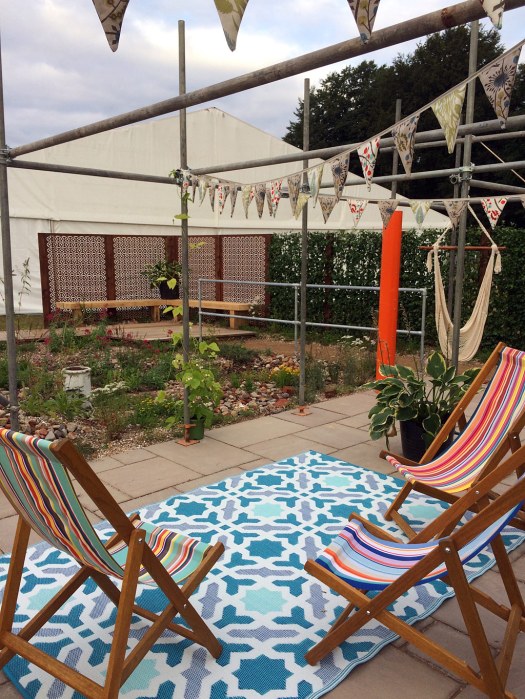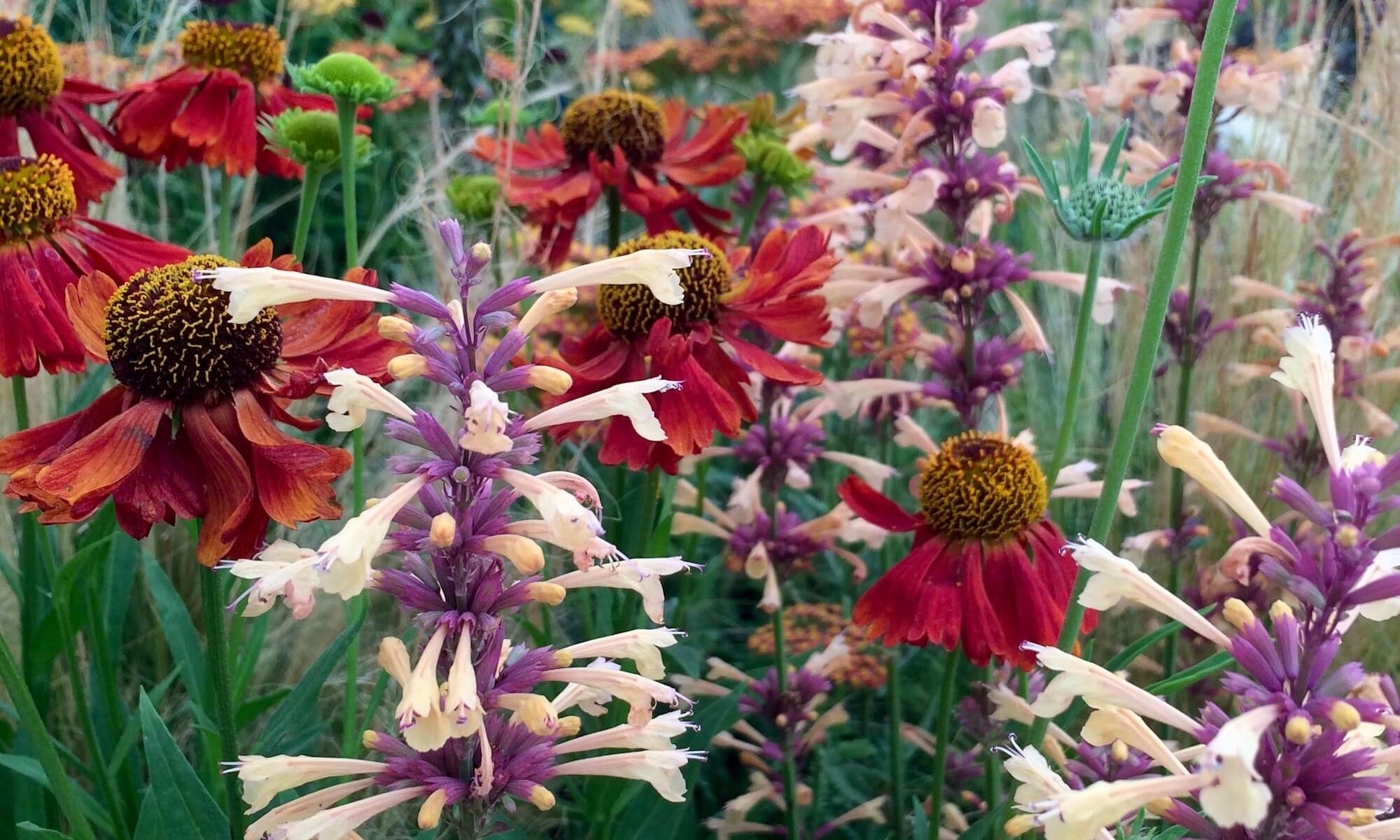If you’re the kind of person who smiles to see plants growing in cracks in (someone else’s) walls and pavements, puzzles over vines emerging from nowhere and loves the summer weeks when Buddleias with masses of arching, lilac-like flowers cling on to ‘seemingly every derelict building‘, this one’s for you.

I spoke to Roy Lancaster (a lovely fellow) at the Chelsea Flower Show years ago. Identifying me as a fellow Lancastrian by my accent, he told me how a local quarry’s unusual and diverse range of plants were brought to light when a schoolchild took a bunch of flowers to school for a nature project.
An abandoned area of disturbed land where people rarely tread is as good a home, if you happen to be a rare orchid, as anywhere else. Nature doesn’t have any concept of location, location, location – or at least not in the human way, where a house is worth ten times more in one place than in another.

Plants flower where the seeds happen to fall, if they can. We’ve all seen a tangling of nature and building debris like this: we just don’t expect to see it faithfully recreated and offered up for our consideration at a flower show. Eds Higgins’ Finding [urban] Nature garden (hereafter, the F[u]N garden, following the designer’s styling) imagined a brownfield community garden as part of the RHS Young Designer Competition.

The design included a gully-style water feature crossed by a plank; areas of building debris being reclaimed by nature; raised beds stuffed with produce; deckchairs for relaxing after a session in the garden; a community notice board with a list of events; a swing (you’d have to make good use of all that scaffolding); and bunting for good cheer.
Eds mentioned that one of his biggest challenges was sourcing weedy enough plants. That gave the judges a quandary too – was the planting perfectly imperfect? – which they resolved by awarding the garden a Silver medal. Plants used were a mix of garden escapee type plants and those that rapidly colonise brownfield sites, such as red valerian, Erigeron karvinskianus and the ubiquitous Buddleja davidii.
Cultivated herbs, veggies and fruit were planted in wooden raised beds with nasturtiums and marigolds, finished off with brightly painted pallets, placed sideways and used as tool holders. (I’m betting that the community garden lucky enough to receive the tools that Burgon and Ball donated after the show now has them safely locked away).
Much of the material Eds specified was recycled – scaffolding boards and poles repurposed as a pavilion and walkways, crushed brick and concrete, offcuts of fabric, and a plastic rug – but there were show elements too, such as the fancy Corten privacy screens and the wooden benches at their feet.

Not all reclamation projects are equally welcome from Eds Higgins’ point of view. The show garden was inspired by his memories of a brownfield site that flowers, insects, wild mammals and birds made use of, now covered by the sterile surface of a car park. His what-if? garden envisaged a gentler outcome – that a F[u]N-loving human community had been able to coexist with the wildlife.
It seems like a fantasy, because we know life isn’t like that in the 21st Century. On Instagram, Eds quotes Aldo Leopold:
“We abuse land because we regard it as a commodity belonging to us. When we see land as a community to which we belong, we may begin to use it with love and respect.”
We’ve all seen parts of cities left to decay into unloved piles of rubble. It comes down to pounds, shillings and pence (another way of saying ‘location, location, location’). If there is plenty of spare land, we leave it and move on: it costs more to tidy up a site than to start fresh. If there is little spare, land becomes valuable so spaces like this are reused. At either extreme, there are huge social costs on local people.

Eds’ garden reminds me of a real-life city project my sweetheart and I were invited to look round near the heart of Glasgow. The council had, after much persuasion, allowed locals to use an area of land set aside for a building project that had fallen through as allotments until such time as the building was ready to start. It was a F[u]N place in every way, where people of all ages got together to grow things. Part of the site was set aside for wildflowers, but the human side was intensively and ingeniously used, with a relatively high-tech solution for water conservation.
I first saw peas arranged on soil to spell out ‘Peas on Earth’ there. It seemed apt. But these gardeners were making their little raised beds productive and lovely, knowing it could all be taken away. Anyone who has ever cared for a garden out of love knows what giving one up means. I often think of the people and wonder if their gardens are now buildings – or a car park.
Find out more about the Young Designer Competition 2018 on the RHS website.





Oooo, I love love love this. Altho’ my garden is, ostensibly, a cottage garden, I love these ideas. Now a use for my wooden pallets. Can’t wait to try it.
I’m glad the show garden inspired you 🙂
I like red valerian, too. We have some here, and I set some in a stone wall in France. It thrived.
It’s an archetypal stone wall plant. I associate it with the seaside too – it catches the eye in places where other plants peter out.
Yes! A very thought-provoking post. As the world population continues to soar, we really need to be thinking about how to encourage growing things in an unlikely places.
You’ve made me think about growing plants on Mars and a tomato plant I once saw grown from a seed that had orbited the Earth. Whether the seed was set and matured in space, or just spent some time there I’m not sure.
Very interesting. I’m not sure that I like this as a ‘garden’ but as a means to make people aware of unclaimed land then it is good. Ed should have asked me for some weedy plants. I have plenty growing in my ‘car park’ 🙂
I’m sure he’d have been grateful for the offer, though it might still have been a challenge to dig weeds up and plant them somewhere else. Their roots tend either to be flimsy, one-use-only things or fixed and unbudgeable.
So very true!
A lot of food for thought in your post on the value of nature in a city environment! Great photos too!
The gardens that grab you the most in the headiness of a show are not necessarily the ones that stay with you after you’ve gone home. This show garden planted seeds of thoughts, as you say, and not unambiguous ones. In the context of a show, you know the space is curated and that creates a kind of jar. Back in the world, you see areas of cities laid and left to waste near potential gardeners who have no outdoor space at all and the garden’s premise comes back, with the possibility it holds out.
Our species is ever astonishing. We are geniuses at destroying and geniuses at creating. I love the emphasis on garden/land as community, and I hope that community of gardeners in Glasgow is thriving. Lots to think about in this post.
I hope so too. We set out to look for it last time we were in Glasgow but didn’t find it. We were only there overnight and might have not remembered exactly where it was.
I do hope it was a matter of just not finding it. Such a nice thought that it might still be there.